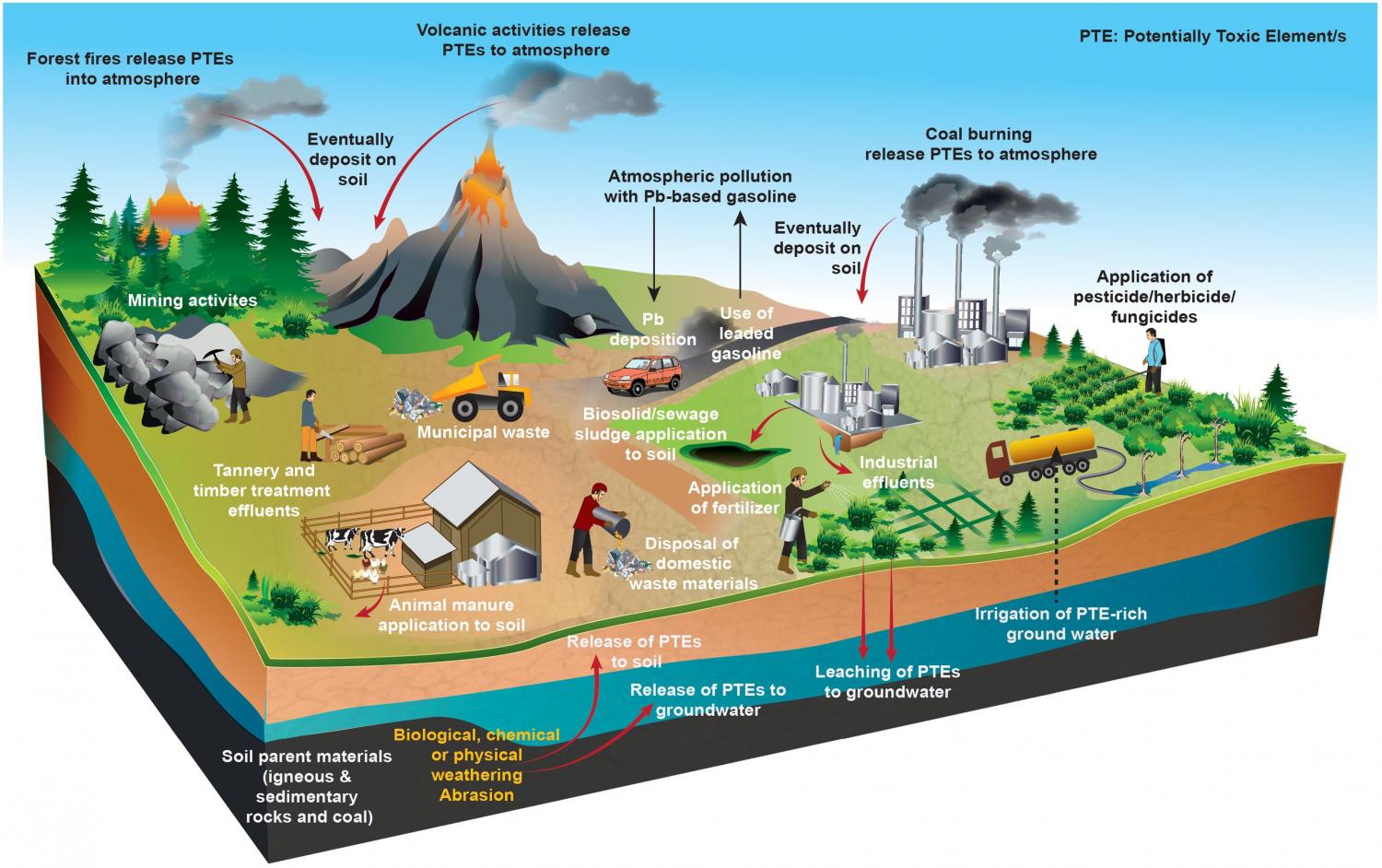
Elsevier, Environment International, Volume 134, January 2020
Soil contamination by potentially toxic elements (PTEs) has led to adverse environmental impacts. In this review, we discussed remediation of PTEs contaminated soils through immobilization techniques using different soil amendments with respect to type of element, soil, and amendment, immobilization efficiency, underlying mechanisms, and field applicability. Soil amendments such as manure, compost, biochar, clay minerals, phosphate compounds, coal fly ash, and liming materials are widely used as immobilizing agents for PTEs. Among these soil amendments, biochar has attracted increased interest over the past few years because of its promising surface properties. Integrated application of appropriate amendments is also recommended to maximize their use efficiency. These amendments can reduce PTE bioavailability in soils through diverse mechanisms such as precipitation, complexation, redox reactions, ion exchange, and electrostatic interaction. However, soil properties such as soil pH, and clay, sesquioxides and organic matter content, and processes, such as sorption/desorption and redox processes, are the key factors governing the amendments' efficacy for PTEs immobilization in soils. Selecting proper immobilizing agents can yield cost-effective remediation techniques and fulfill green and sustainable remediation principles. Furthermore, long-term stability of immobilized PTE compounds and the environmental impacts and cost effectiveness of the amendments should be considered before application.
